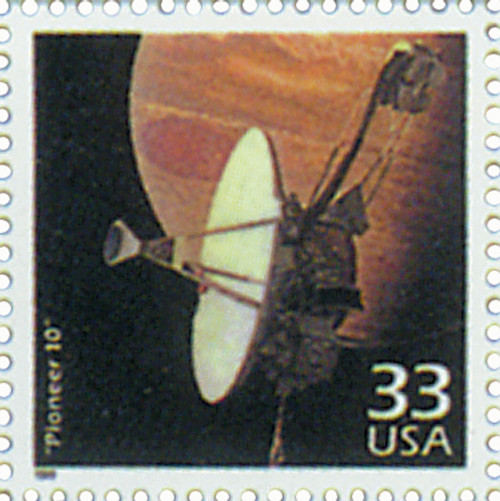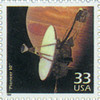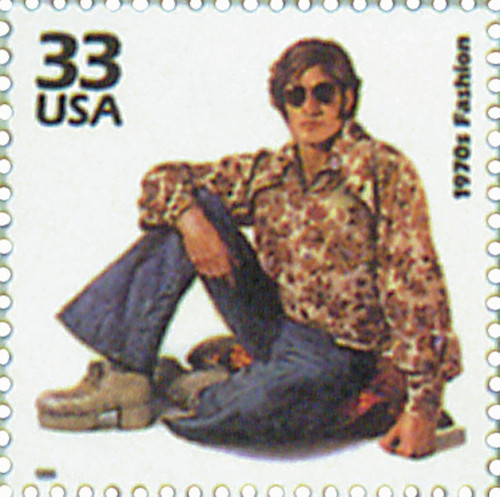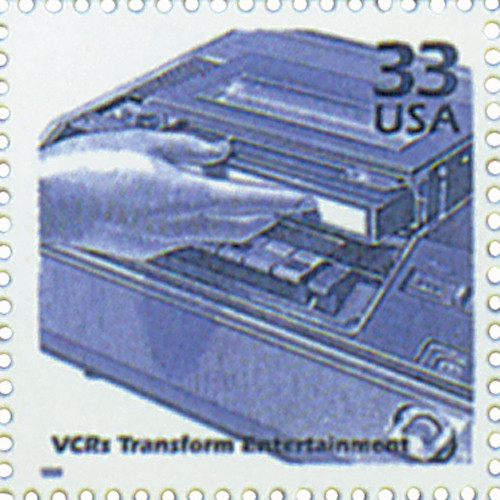
# 3189i - 1999 33c Celebrate the Century - 1970s: "Pioneer 10"
US #3189i
1999 “Pioneer 10” – Celebrate the Century (1970s)
• Part of the eighth sheet in the Celebrate the Century stamp series issued from 1998-2000
• Commemorates the launch of “Pioneer 10”
• Includes text on the back with historical details
Stamp Category: Commemorative
Series: Celebrate the Century
Value: 33¢ First Class Mail Rate
First Day of Issue: November 18, 1999
First Day City: New York, New York
Quantity Issued: 90,000,000
Printed by: Ashton Potter (USA) Ltd.
Printing Method: Offset, Intaglio
Format: Panes of 15
Perforations: 11.5
Tagging: Block tagging
Why the stamp was issued: Honors the first spacecraft sent to Jupiter.
About the stamp design: Pictures artwork by Kazuhiko. Includes the following text on the back: “Launched March 1972, ‘Pioneer 10’ was the first spacecraft to travel to Jupiter and send back data and images. Eleven years later, it became the first man-made object to leave the solar system.”
First Day City: The First Day of Issue Ceremony was held at the Postage Stamp Mega-Event at the Jacob K. Javits Convention Center in New York City.
About the Celebrate the Century series: The USPS launched the Celebrate the Century series in 1998 to mark the end of the 20th century and herald the arrival of the 21st. The series includes 10 sheets of 15 stamps (150 in total), with each honoring important moments from a different decade (1900s, 10s, 20s, 30s, 40s, 50s, 60s, 70s, 80s, and 90s). At the time of completion, it was the longest and most ambitious commemorative stamp series in US history.
History the stamp represents: Pioneer 10 roared away from Kennedy Space Center toward Jupiter at a speed of 32,114 miles an hour on March 2, 1972. Pioneer was a long-running series of United States space probes that have included three basic types of missions: lunar, solar/interplanetary, and planetary, such as the 570-pound Pioneer 10.
The probe carried most of its 11 instruments inside a hexagon-shaped body. Its antenna, nine feet in diameter, received instructions and returned data back to earth. The antenna faced Earth for the entire journey. The craft also had three appendages which carried scientific equipment.
Pioneer 10 flew into the asteroid belt between Mars and Jupiter in mid-July, 1972. By February, it had emerged. Having survived this danger, Pioneer 10 encountered Jupiter in November. It explored the planet’s outermost moons, as well as its radiation belts. It took pictures of Jupiter’s “Great Red Spot,” which were the first images that suggested the area was a massive storm.
Pioneer 10 flew closest to Jupiter on December 3, 1973. The mission helped scientists determine that Jupiter had its own rings. Also, Pioneer 10 was the first Earth spacecraft to make it through the asteroid belt as well as Jupiter’s blanket of radioactivity. After it passed Jupiter, the craft traveled on, and reached Pluto in 1990.
US #3189i
1999 “Pioneer 10” – Celebrate the Century (1970s)
• Part of the eighth sheet in the Celebrate the Century stamp series issued from 1998-2000
• Commemorates the launch of “Pioneer 10”
• Includes text on the back with historical details
Stamp Category: Commemorative
Series: Celebrate the Century
Value: 33¢ First Class Mail Rate
First Day of Issue: November 18, 1999
First Day City: New York, New York
Quantity Issued: 90,000,000
Printed by: Ashton Potter (USA) Ltd.
Printing Method: Offset, Intaglio
Format: Panes of 15
Perforations: 11.5
Tagging: Block tagging
Why the stamp was issued: Honors the first spacecraft sent to Jupiter.
About the stamp design: Pictures artwork by Kazuhiko. Includes the following text on the back: “Launched March 1972, ‘Pioneer 10’ was the first spacecraft to travel to Jupiter and send back data and images. Eleven years later, it became the first man-made object to leave the solar system.”
First Day City: The First Day of Issue Ceremony was held at the Postage Stamp Mega-Event at the Jacob K. Javits Convention Center in New York City.
About the Celebrate the Century series: The USPS launched the Celebrate the Century series in 1998 to mark the end of the 20th century and herald the arrival of the 21st. The series includes 10 sheets of 15 stamps (150 in total), with each honoring important moments from a different decade (1900s, 10s, 20s, 30s, 40s, 50s, 60s, 70s, 80s, and 90s). At the time of completion, it was the longest and most ambitious commemorative stamp series in US history.
History the stamp represents: Pioneer 10 roared away from Kennedy Space Center toward Jupiter at a speed of 32,114 miles an hour on March 2, 1972. Pioneer was a long-running series of United States space probes that have included three basic types of missions: lunar, solar/interplanetary, and planetary, such as the 570-pound Pioneer 10.
The probe carried most of its 11 instruments inside a hexagon-shaped body. Its antenna, nine feet in diameter, received instructions and returned data back to earth. The antenna faced Earth for the entire journey. The craft also had three appendages which carried scientific equipment.
Pioneer 10 flew into the asteroid belt between Mars and Jupiter in mid-July, 1972. By February, it had emerged. Having survived this danger, Pioneer 10 encountered Jupiter in November. It explored the planet’s outermost moons, as well as its radiation belts. It took pictures of Jupiter’s “Great Red Spot,” which were the first images that suggested the area was a massive storm.
Pioneer 10 flew closest to Jupiter on December 3, 1973. The mission helped scientists determine that Jupiter had its own rings. Also, Pioneer 10 was the first Earth spacecraft to make it through the asteroid belt as well as Jupiter’s blanket of radioactivity. After it passed Jupiter, the craft traveled on, and reached Pluto in 1990.













